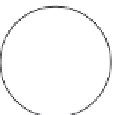Environmental Engineering Reference
In-Depth Information
DC-DC
converter
Controller-1
Controller-2
Figure 3.24
Wide-range synchronous generator wind turbine with a diode-based
rectifier as the generator-side converter
3.6.2.1 Wind turbine arrangement with diode-based rectifier
Figure 3.24 illustrates the schematic of the wind turbine with a diode-based rectifier
as the generator-side converter. The diode rectifier converts the output of the
generator to DC power and a PWM-VSC converts the DC power available at the
rectifier output to AC power.
One way to control the operation of the wind turbine with this arrangement
(and assuming a permanent magnet generator) is illustrated in Figure 3.24. A DC-
DC converter is employed to control the DC-link voltage (controller-1), and the
grid-side converter controls the operation of the generator and the power flow to
the grid (controller-2). With appropriate control, the generator and turbine speed
can be adjusted as wind speed varies so that maximum energy is collected.
3.6.2.2 Wind turbine arrangement with PWM voltage source
converters
In this arrangement both the generator-side and the grid-side converters are PWM-
VSCs as shown in Figure 3.25. The generator can be directly controlled by the
generator-side converter (controller-1) whilst controller-2 maintains the DC-link
voltage at the desired value by exporting active power to the grid. Controller-2 also
controls the reactive power exchange with the grid.
3.6.2.3 Wind turbine control
Control over the power converter system can be exercised with different schemes.
The generator-side converter can be controlled using load angle control techniques
(Akhmatov
et al
., 2003) or it can be controlled by means of more accurate but
also more sophisticated techniques such as vector control (Morimoto
et al
., 1994;





















































































Search WWH ::

Custom Search